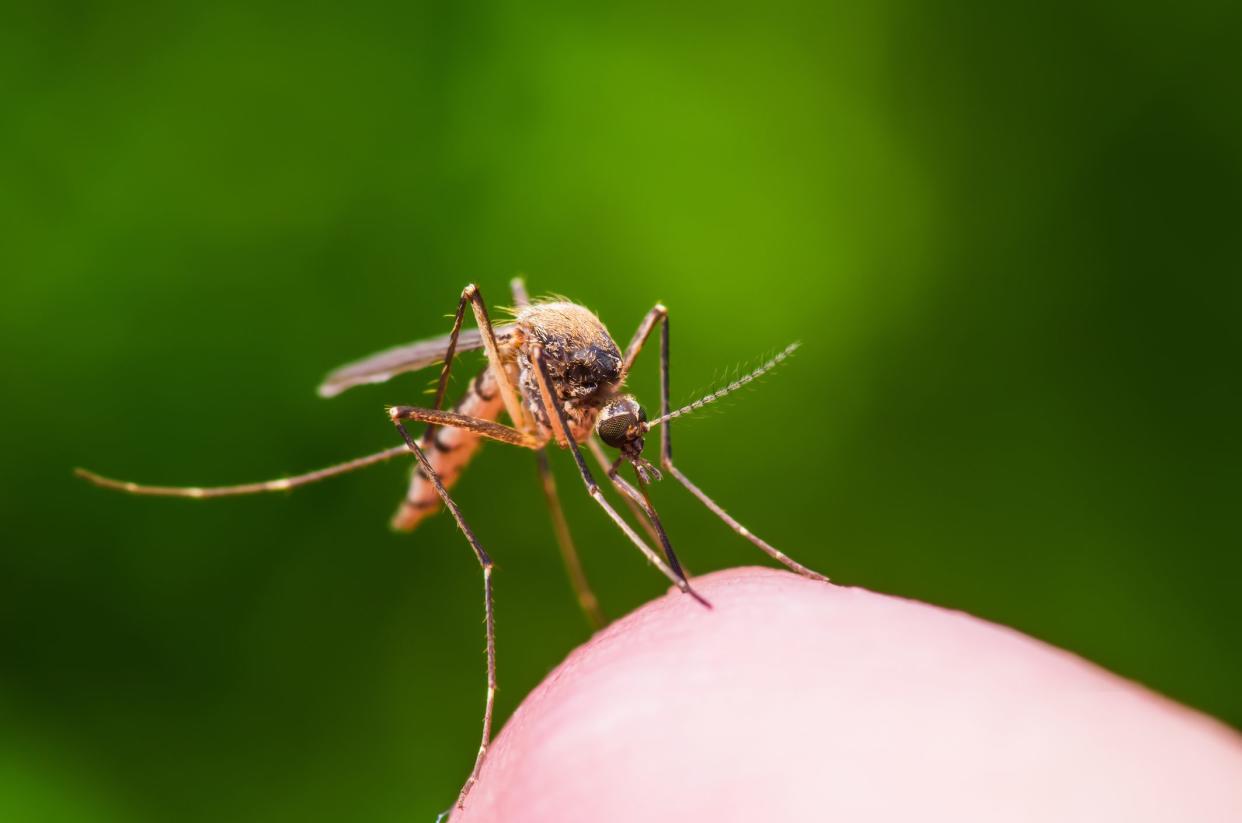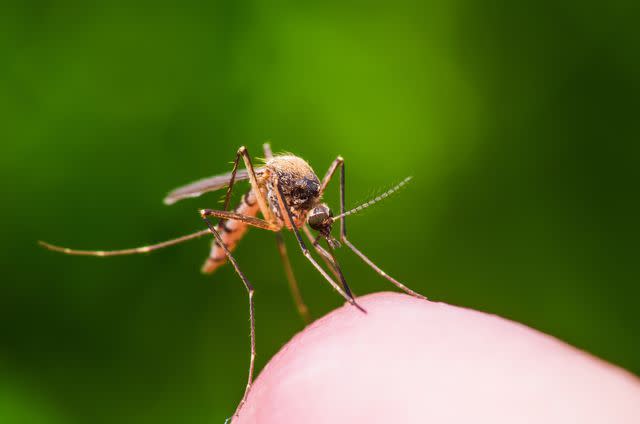CDC Alert: First Locally-Acquired Malaria Cases Reported in the US in 20 Years

nechaev-kon/Getty Images
Fact checked by Nick Blackmer
Five cases of Malaria have been identified in the U.S., the CDC reported Monday.
The cases—four in Florida and one in Texas—are the first locally-acquired cases in the U.S. in 20 years.
Though the risk of infection is low, the CDC recommends doctors consider malaria diagnoses for ill patients, even if they haven't been out of the country.

nechaev-kon/Getty Images
Five cases of locally-acquired malaria have been identified in the United States, the Centers for Disease Control and Prevention (CDC) said in a health advisory on Monday.
There were four confirmed cases in Florida and one in Texas, though the two don’t seem to be related, the CDC said. This is the first time that Americans have contracted malaria on U.S. soil in two decades.
“It’s not uncommon to have malaria be identified in the United States,” William Pan, PhD, associate professor of population studies and global environmental health at the Duke University Global Health Institute, told Health. “What is uncommon is that there’s actual local transmission.”
About 2,000 malaria cases are documented in the U.S. each year, though people usually acquire the disease in another country where malaria is endemic. This is the first time since 2003 that Americans have caught malaria at home.
Malaria can be caused by five parasites of the Plasmodium genus—the one behind these locally-acquired cases is called Plasmodium vivax (P. vivax). Most cases of severe malaria previously documented in the U.S. have been attributed to a different parasite. Those who acquired malaria in the U.S. have all received treatment and their health is improving.
The CDC said the risk for getting a malaria infection is low in the U.S., despite the new cases. Still, doctors should consider a malaria diagnosis for their patients—even if they haven’t recently traveled outside the country—since quick diagnosis and treatment can prevent serious outcomes and limit the spread of malaria.
“We haven’t had malaria in the United States for 20 some years, and it was eradicated back in the 50s,” Pan said. “If it were to reintroduce itself in the U.S., just like other places around the world, it would pose a major health disaster.”
Here’s what experts had to say about how to best manage malaria in the U.S., why the cases may be popping up now, and what individuals can do to keep themselves protected.
Related: Symptoms of Mosquito Bites and How To Get Relief
How Does Malaria Spread?
Malaria is a serious illness caused by the Plasmodium parasite, and it’s quite common around the world—in 2021, there were an estimated 247 million malaria cases.
The disease was quite widespread in the U.S. too, until it was eliminated in the early 1950s.
Despite this success, the parasite that causes malaria is spread by female Anopheles mosquitoes, which are still prominent in the Midwest, Southeast, and Northeast. If people with malaria are bitten by these mosquitoes, it’s possible for the disease to re-emerge.
“Typically what happens is a human will have malaria, and then you have a mosquito called an Anopheles mosquito that will bite that human,” Pan explained. “Once [Anopheles] are infected, they are infected for life and they can keep transmitting to different people.”
The fact that Americans have gotten malaria without traveling means that there are now some mosquitoes here in the U.S. that are infected with the parasite.
Once someone is bitten by an infected mosquito, it usually takes about 10 days to four weeks for the person to start feeling sick. In rarer cases, symptom onset can take up to a year.
People who get infected with the P. vivax parasite—like those in Texas and Florida—can expect headache, fever, and body aches, Pan said. The symptoms usually come in waves or cycles.
As dangerous as malaria is, P. vivax is not usually as serious as other malaria-causing parasites. The P. falciparum strain, most commonly found in Africa, is the deadliest. That continent shares the highest malaria burden—there were an estimated 619,000 malaria-related deaths in 2021, and 96% were in Africa.
Though the P. vivax parasite is significantly less deadly, it can still be worrisome, Pan explained.
Here in the U.S., where there’s essentially no general immunity to malaria, cases can be quite severe, said Thom Eisele, PhD, MPH, professor of epidemiology in the department of tropical medicine and infectious diseases at the Tulane University School of Public Health and Tropical Medicine.
“With zero immunity, people would get very sick and they would end up seeking care,” Eisele told Health. “We’re talking about a fever in excess of 102 degrees—so it would not be a normal sort of, ‘I’m just not quite feeling good.’ You would be going to the emergency room or [to] your doctor.”
In fact, some research shows that P. vivax may carry similar risks of severe illness and death as P. falciparum—the idea that P. vivax is “benign” isn’t really true.
The CDC warned of this in its health advisory—it said that the disease, if not treated, can become life-threatening and can cause mental changes, seizures, renal failure, acute respiratory distress syndrome, or coma.
Related: How Climate Change Is Worsening Infectious Diseases Across the Globe
Why Are We Seeing Malaria Cases in the US?
Americans have always traveled to and from malaria-endemic countries, and the Anopheles mosquito continues to thrive in the U.S. So it can be a bit challenging to explain why this is the first time in 20 years that the U.S. is seeing locally-acquired infections.
But one hypothesis is climate change, according to Prakash Srinivasan, PhD, assistant professor at the Malaria Research Institute at the Johns Hopkins Bloomberg School of Public Health.
The Anopheles mosquitoes need “humid and warm habitats for them to lay eggs and to grow,” Srinivasan said. “With global climate change, there’s always that threat of the expansion in the area in which the mosquitoes can thrive.”
Of course, it’s difficult to say if this was a one-off occurrence, or if climate change could be behind a steadier increase in malaria’s reach, he added.
The locally-acquired malaria cases could also be an indirect product of the COVID pandemic.
Globally, P. vivax related cases declined from 24.5 million in 2000 to 14.3 million in 2017. However, logistical challenges and other disruptions in testing and treatment were in part related to a spike in malaria cases and deaths since the COVID pandemic.
“Perhaps the overall increase in the number of malaria infections globally—and therefore more infections in the travelers that come back—may have contributed to this local transmission,” Srinivasan said.
And with pandemic-related health skepticism, some people may have more of a “cavalier attitude” toward public health warnings, even when it comes to malaria, Pan theorized.
But again, because the U.S. has the “ingredients” for malaria transmission—namely, the Anopheles mosquito and some people who got infected with the parasite abroad—it may have simply been a matter of time before the U.S. saw local transmission again, Eisele said.
Related: Could Your Soap Be Making You More Attractive to Mosquitoes?
Avoiding Malaria and Staying Safe
It’s important that clinicians and everyday people alike heed the CDC’s warning and stay vigilant about preventing malaria transmission. However, experts stress that the U.S. is not headed for another COVID-esque epidemic.
“I don’t think there’s any reason to panic,” Srinivasan said. “Unlike many of the viral infections that we’ve been more accustomed to in the last few years like COVID and the flu—which can be easily transmitted from person-to-person through the air—the malaria parasites require mosquitoes to be transmitted, and the number of cases are so, so small.”
The U.S. also has ample treatment options available for people who are diagnosed with malaria. It’s a “largely preventable and treatable disease,” Srinivasan said. People diagnosed with malaria may receive antimalarial drugs like chloroquine or hydroxychloroquine, and primaquine, Eisele said.
Drug resistance to these treatments is of course a concern, as is the fact that malaria vaccines are not yet widely available. But in a place like the U.S., treating malaria should be effective, so long as patients and doctors think to test for it.
But because there’s no clear driver behind these U.S.-based cases, the most important thing is that people take the necessary precautions, Pan said.
People should cover their legs and arms when they’re outside and use bug spray to prevent any mosquito bites, experts stressed. The Anopheles typically bites people at dawn, dusk, or sometimes at night, Pan and Eisele said, so that’s when people should be extra cautious.
This is good advice for everyone, as mosquitoes can transmit other viruses beyond malaria, such as West Nile virus. But people in Florida and Texas, where these cases were reported, should be especially vigilant this summer about protecting themselves against mosquito bites.
And if people are traveling this summer, it’s important that they assess their malaria risk and take any CDC-recommended precautions. People often associate malaria with Africa and southern Asia, but it’s present in the Caribbean, and in South and Central America too, Pan said.
And of course, if a person is feeling sick and believes there’s a chance they could have a locally-acquired malaria infection, it’s important to seek care immediately.
“If you have a headache, if you’re feeling that you’re getting feverish, go see a clinician—don’t delay,” Pan said.
On a larger scale, the CDC and local departments of public health are investigating these locally-acquired cases, and are encouraging hospitals and clinicians to be prepared and have malaria diagnostic tools and treatments available.
“We have good access to health care compared to other endemic countries. We have an excellent surveillance system, and it’s very treatable,” Eisele said. “The odds of it actually taking hold or it causing major problems in the U.S. are slim to none.”
For more Health news, make sure to sign up for our newsletter!
Read the original article on Health.

